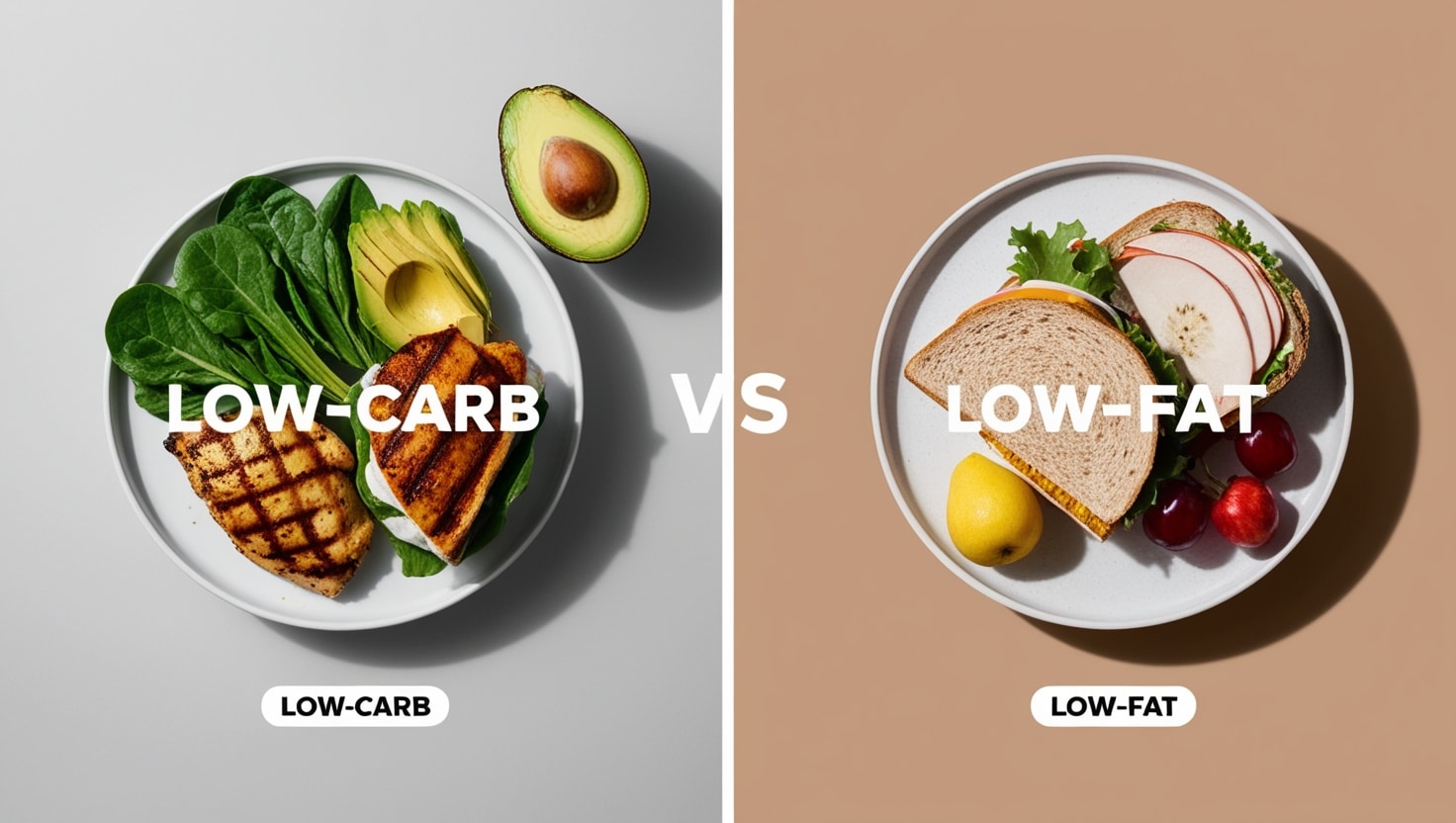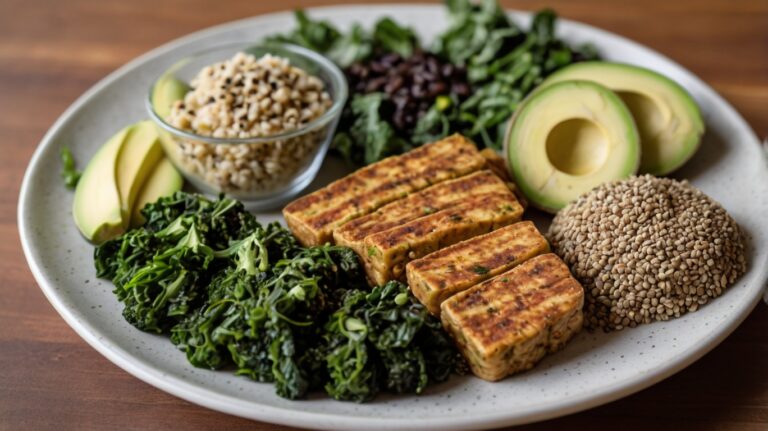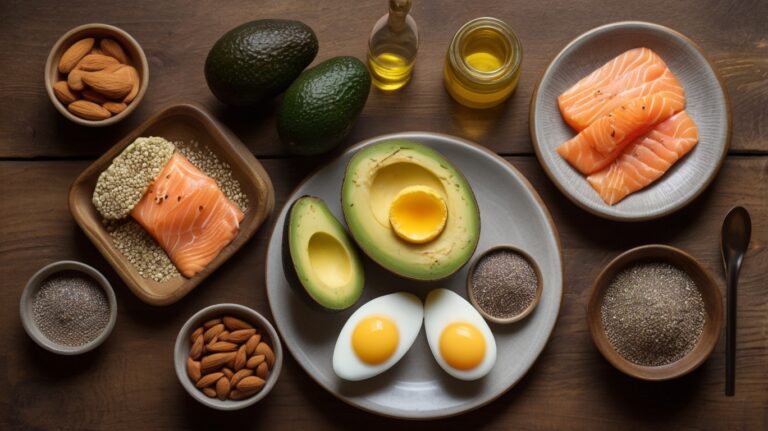Low-Carb vs. Low-Fat: Which is Better for Weight Loss?
Did you know that nearly 45 million Americans start a diet each year? Yet, the obesity rate keeps rising. I’m here to shed light on the low-carb vs. low-fat diet debate. I want to help you pick the best diet for your needs.
We’ll look into the science and strategies of both diets. We’ll see how they affect weight loss, metabolic health, and overall health. By learning about macronutrients and their effects, you can pick a diet that fits your lifestyle and goals.
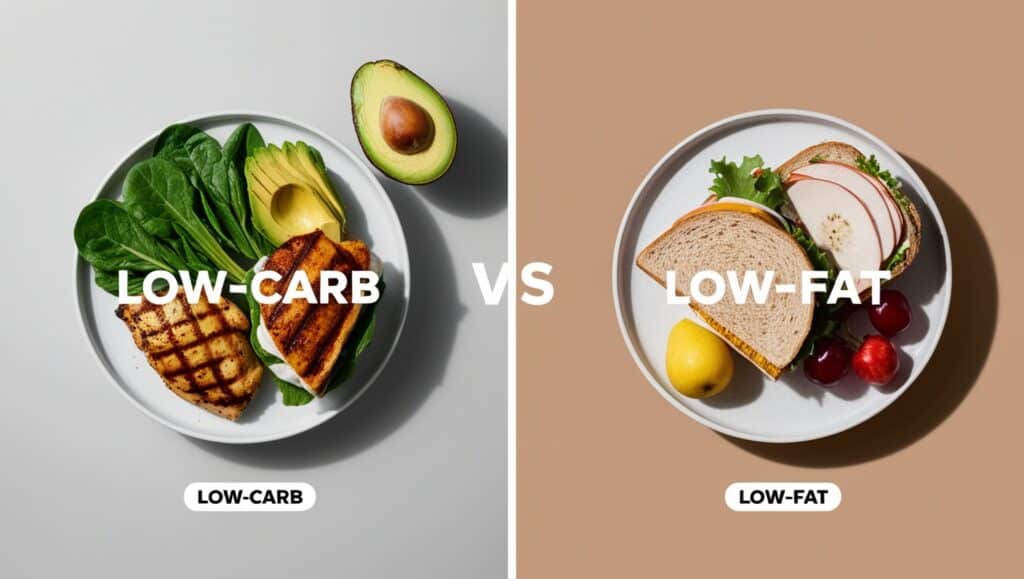
Demystifying Popular Weight Loss Diets
When looking at weight loss, two diets stand out: the low-carb, or keto diet, and the low-fat, calorie-conscious diet. Each has its fans and claims to help you lose weight. Knowing what each diet is about can help you pick the best one for you.
Low-Carb: The Ketogenic Approach
The low-carb diet, or keto diet, cuts down on carbs to enter a state called ketosis. In this state, your body uses stored fat for energy instead of carbs. By eating more fat and fewer carbs, the keto diet helps you burn fat for fuel, leading to weight loss.
Low-Fat: The Calorie-Conscious Choice
The low-fat diet is all about eating less fat to lose weight. It works by eating fewer calories by cutting back on high-fat foods. People following this diet choose low-fat or non-fat foods to eat fewer calories and lose weight.
Both diets have good points and downsides. We’ll look into these more in the next sections. Knowing the details of each diet can help you choose the best one for your lifestyle and goals.
Understanding Macronutrient Ratios
Macronutrients like carbohydrates, protein, and dietary fat are key for weight loss and health. Knowing how carbohydrates and dietary fat work can help you choose the best diet for your goals.
The Role of Carbohydrates
Carbohydrates give our bodies energy. They turn into glucose, which our cells use to make ATP, our energy source. But eating too many carbs can lead to weight gain and health problems. Finding the right balance is important for carbs.
The Significance of Dietary Fat
Dietary fat is not bad. It’s essential for our health. Fats help absorb vitamins, make hormones, and control inflammation. But, it’s important to choose the right kind of fats.
Unsaturated fats are good for the heart. It’s important to eat less saturated and trans fats for good health.
Low-Carb vs. Low-Fat: The Battle for Metabolic Dominance
The debate between low-carb and low-fat diets often focuses on their impact on metabolic health and body shape. It’s important to know which diet might work best for you.
Insulin resistance, a major issue with metabolic health, is affected by diet. Studies show that low-carb diets can help improve insulin sensitivity. This means your body might need less insulin, leading to better sugar control and a healthier fat-to-muscle balance.
A low-fat diet, on the other hand, can help you eat fewer calories. This can lead to weight loss and a better body shape. But, it might not fix insulin resistance, which could slow down your metabolism and affect how fat and muscle are distributed in your body.
| Metric | Low-Carb Diet | Low-Fat Diet |
|---|---|---|
| Insulin Resistance | Improved | May not improve as significantly |
| Metabolic Health | Enhanced | Potential for limited improvement |
| Body Composition | Favors fat loss and muscle preservation | May result in a less optimal fat-to-muscle ratio |
Choosing between a low-carb or low-fat diet depends on your goals, health, and what you prefer. Knowing the differences between these diets can help you pick the right one for your health and fitness goals.
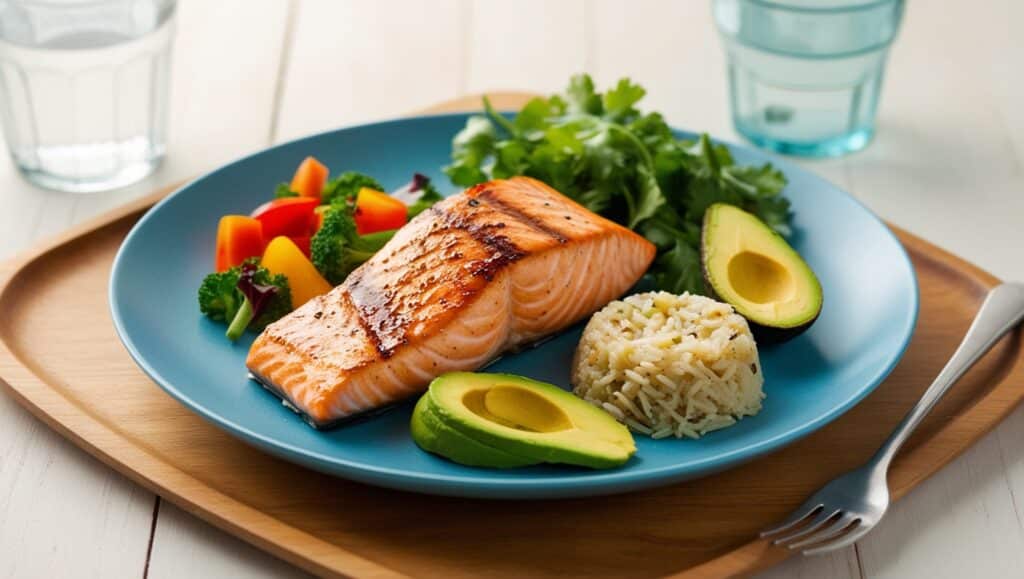
Insulin Resistance and Body Composition
I’ve always been curious about how insulin resistance, carbohydrate restriction, and body composition are linked. Insulin resistance affects our weight and health in big ways.
The Impact of Carbohydrate Restriction
Reducing carbs is a key way to fight insulin resistance. By eating fewer refined and complex carbs, we can control our insulin levels. This can lead to losing fat and keeping muscle, which is key to a healthy metabolism.
Learning about insulin resistance and carbs has changed how I make food choices. It helps me pick foods that are good for my weight and health. This knowledge lets me manage my insulin levels better and reach my fitness goals.
Plant Toxins: The Sneaky Saboteurs in Your Diet Debate
Speaking of low-carb and low-fat diets, have you ever considered how plant toxins might be sneaking into your weight loss journey? I know, it sounds weird—aren’t plants the good guys?
But some come with hidden troublemakers like lectins, oxalates, and phytates that can throw a wrench into your progress. Whether you’re slashing carbs or trimming fat, if you’re eating stuff like grains, beans, nuts, or even leafy greens, these compounds could be stirring up inflammation, bloating, or that “ugh, I’m exhausted” vibe that makes sticking to a plan brutal.
Here’s the deal: lectins, found in things like beans and grains, can irritate your gut and leave you feeling puffy or off. Oxalates—think spinach or almonds—might mess with your joints or kidneys if they build up.
And phytates in seeds or whole grains? They grab onto nutrients like iron and zinc, so your body can’t use them, tanking your energy. All this can make weight loss tougher—hard to shed pounds when you’re bloated or dragging through the day.
I’ve been there. I used to follow a low-carb diet religiously, but I’d still get hit with bloating and zero energy. It wasn’t until I ditched plants entirely and went carnivore—yep, just meat, eggs, and fish—that things clicked.
My gut settled down, my energy came roaring back, and the scale finally started moving. It was like my body stopped fighting itself.
Frequently Asked Questions
Can I switch between low-carb and low-fat diets?
Yes, but it’s important to transition slowly to avoid disrupting your metabolism and energy levels.
Are there any risks with low-carb or low-fat diets?
Both diets can have risks if not properly balanced. Low-carb diets may lead to nutrient deficiencies, while low-fat diets might lack essential fatty acids.
Which diet is better for heart health?
Low-fat diets are generally recommended for heart health due to their lower saturated fat content, but both can be healthy if properly balanced.
What if neither diet works for me?
It’s crucial to find what works best for you. Consulting with a nutritionist can help tailor a plan to your specific needs.

Conclusion
When it comes to the low-carb vs. low-fat diet debate, there’s no one-size-fits-all answer. Both diets can help you lose weight, but the best choice depends on your personal preferences and lifestyle. Low-carb diets might offer quicker results, but low-fat diets could be easier to maintain over the long term. The key is to choose a diet that you can stick to and that makes you feel your best.
